My first memorable encounter with a truly disastrous fireplace design happened during a home consultation in Chicago’s northern suburbs. The owners had recently purchased a lovely 1920s Tudor with what had once been a classic brick fireplace. The previous owners, apparently seized by HGTV fever around 2010, had “modernized” it with floor-to-ceiling glass mosaic tile in an iridescent teal that transformed the living room into what felt like an upscale aquarium. The new homeowners sat stiffly on their sofa, physically oriented away from what should have been the room’s natural focal point, asking me if there was “any way to make this work without tearing the whole thing out.”
That meeting crystallized something I’d observed across hundreds of home renovations: fireplaces occupy a uniquely powerful position in residential architecture, with a gravitational pull that affects everything around them. When done right, they anchor a space with warmth and purpose. When done poorly, they become visual black holes that distort an entire room’s function and feel. And strangely, despite their considerable visual impact, fireplace designs frequently get treated as isolated decisions rather than integral elements of comprehensive interior architecture.
The Tudor owners’ plight was particularly ironic because their home’s original fireplace had likely been a beautiful, appropriate focal point before someone decided it needed to “pop” with personality. After gently suggesting that sometimes starting over is the most practical approach, we developed a renovation plan that restored a period-appropriate surround and mantel while integrating it thoughtfully with the room’s architectural language. The relief on their faces was immediate—they could finally imagine actually using their living room instead of apologizing for it.
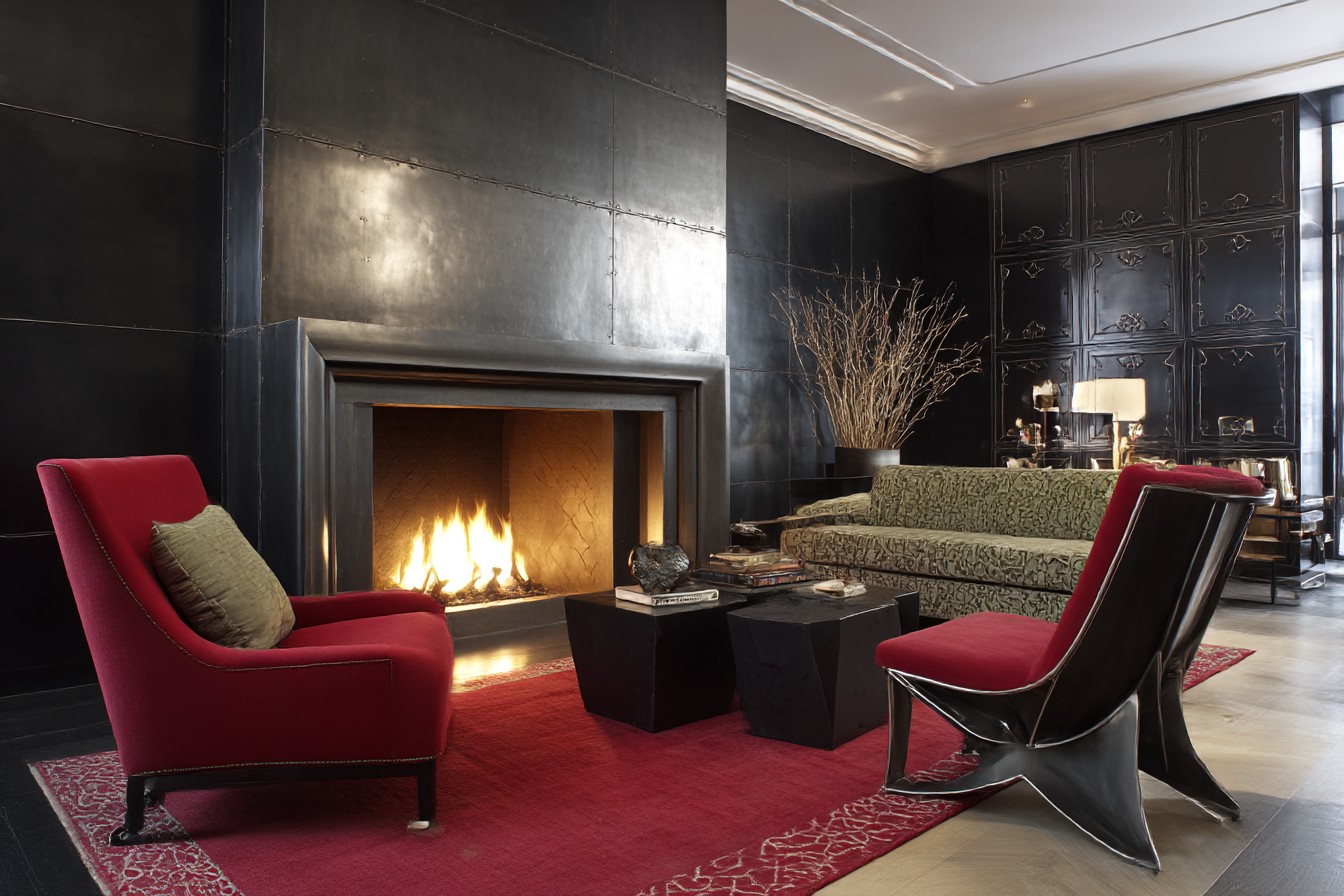
My approach to fireplace design shifted dramatically after renovating the wood-burning fireplace in our Minneapolis Tudor. The original brick surround and simple wooden mantel had been painted various colors over the decades—most recently a glossy cream that had yellowed unpleasantly while collecting soot in a pattern that resembled a giant, gloomy eyebrow. My initial instinct was to make a statement with the renovation, perhaps using handmade tile or dramatic stone to create what design shows love to call a “wow factor.”
Andrea, with her designer’s eye, suggested we pause and consider the fireplace not in isolation but as part of the room’s overall composition. “The fireplace is already a focal point by its nature,” she noted. “It doesn’t need help commanding attention—it needs integration with everything around it.” That perspective completely transformed our approach. Instead of treating the fireplace as a standalone design opportunity, we began considering how it could enhance the room’s existing architectural strengths while allowing other elements to contribute to a cohesive whole.
The most successful fireplace designs I’ve encountered follow this integrative philosophy, regardless of style or period. They acknowledge the fireplace’s natural dominance without allowing it to monopolize attention, creating harmonious relationships with surrounding elements rather than competing with them. This balance becomes particularly important in contemporary open-concept spaces where the fireplace is visible from multiple areas and must work within a larger visual context.
Surround materials provide the most immediate opportunity for either integration or disruption. For our Minneapolis Tudor, we ultimately chose a classic limestone surround with subtle detailing that complemented rather than competed with the room’s existing millwork. The material offered enough visual weight to anchor the space without demanding constant attention, allowing conversation, art, and natural light to share prominence depending on how the room was being used.
This approach contrasts sharply with what I call “feature wall syndrome”—the tendency to treat fireplaces as opportunities for maximum visual impact through high-contrast materials or dramatic scale. While occasionally appropriate in minimalist spaces with little other visual interest, this approach typically creates unbalanced rooms where the eye is continuously drawn to a single overwhelming element rather than experiencing the space holistically.
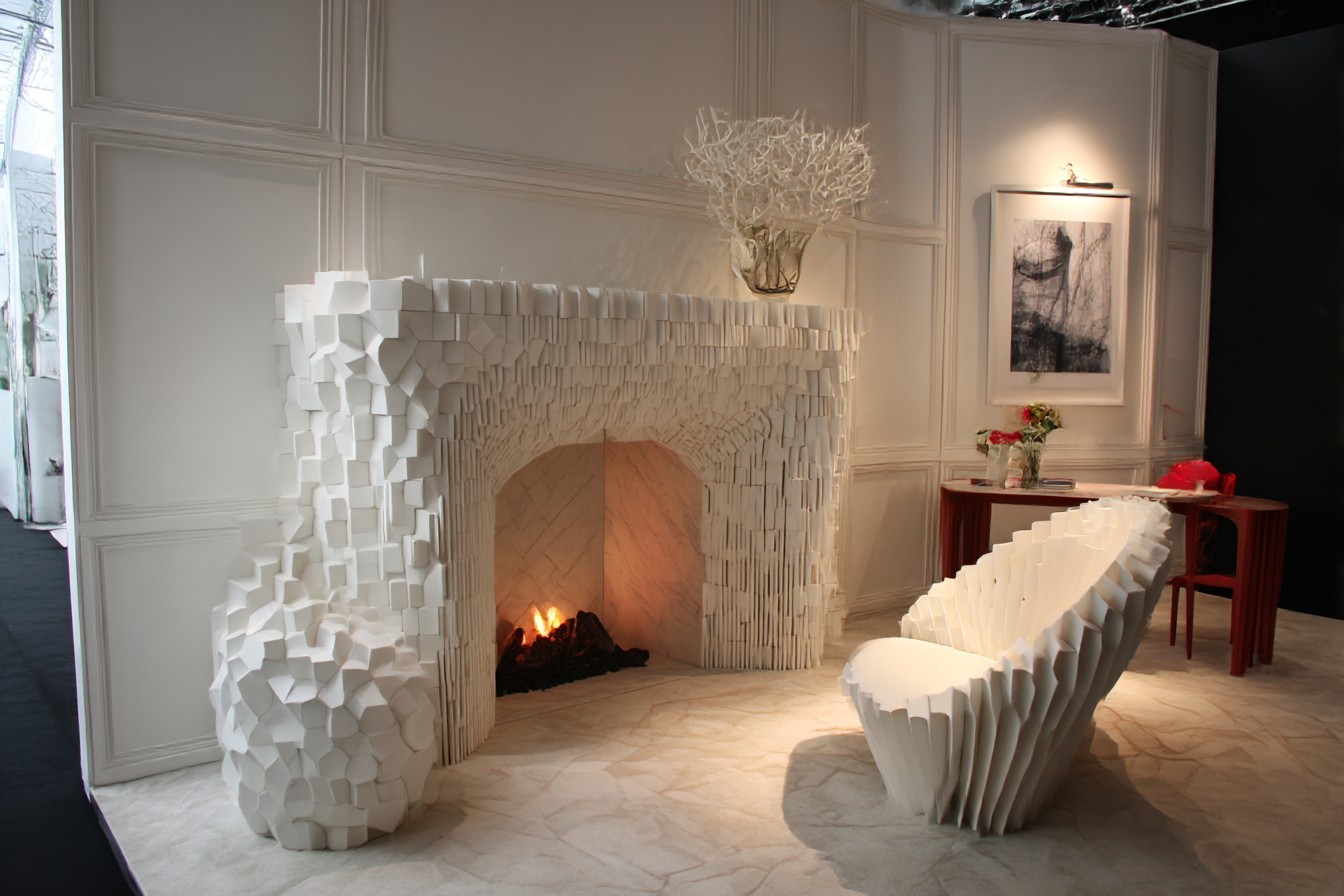
For a client in Denver with a contemporary mountain home, we faced the challenge of integrating a substantial fireplace into an open living area without allowing it to dominate the spectacular views that were the property’s main attraction. Rather than competing with the landscape using dramatic materials, we chose board-formed concrete in a subtle gray tone that echoed the distant mountains visible through the windows. The textural quality provided visual interest up close while the neutral coloration allowed it to recede into the background when enjoying the views. This thoughtful restraint transformed what could have been a competing element into a complementary architectural feature.
Scale and proportion remain critical considerations regardless of style. A client in Boston had inherited a fireplace with a massively oversized mantel that overwhelmed their modestly sized living room, creating awkward furniture arrangements and visual imbalance. Rather than complete replacement, we carefully modified the existing piece, reducing its projection and visual weight by about 30% while maintaining its basic character. This relatively simple adjustment dramatically improved the room’s proportions and flow without requiring a full renovation. Sometimes the best design solutions involve selective editing rather than complete transformation.
Mantel selection provides another opportunity for either coherence or disconnection. For a historic home in Minneapolis with multiple fireplaces, the previous owners had installed different mantel styles in each room—Colonial in the living room, Victorian in the dining room, and vaguely Craftsman in the den. Though each was attractive individually, collectively they created a disjointed experience as you moved through the house. Our renovation standardized the design language across all three spaces while preserving period authenticity, creating visual continuity that made the entire home feel more cohesive.
The relationship between fireplace and adjacent built-ins dramatically impacts both aesthetics and functionality. For a 1940s Colonial in Chicago, we addressed an awkwardly isolated fireplace by flanking it with symmetrical bookcases that visually anchored it while providing much-needed storage. This approach transformed what had been a floating architectural element into an integrated feature wall that improved both appearance and practical function—a particularly valuable combination in older homes where storage often comes at a premium.
In contemporary contexts, the fireplace-to-cabinetry relationship requires particularly thoughtful handling. A client in Seattle had a sleek modern fireplace positioned asymmetrically on a wall they hoped to outfit with media components and storage. Rather than forcing symmetry that would have fought against the architecture, we designed a intentionally asymmetrical arrangement of floating cabinets and open shelving that created overall balance through thoughtful distribution of visual weight. The result felt purposeful rather than awkward, embracing the contemporary layout while providing the functionality they needed.
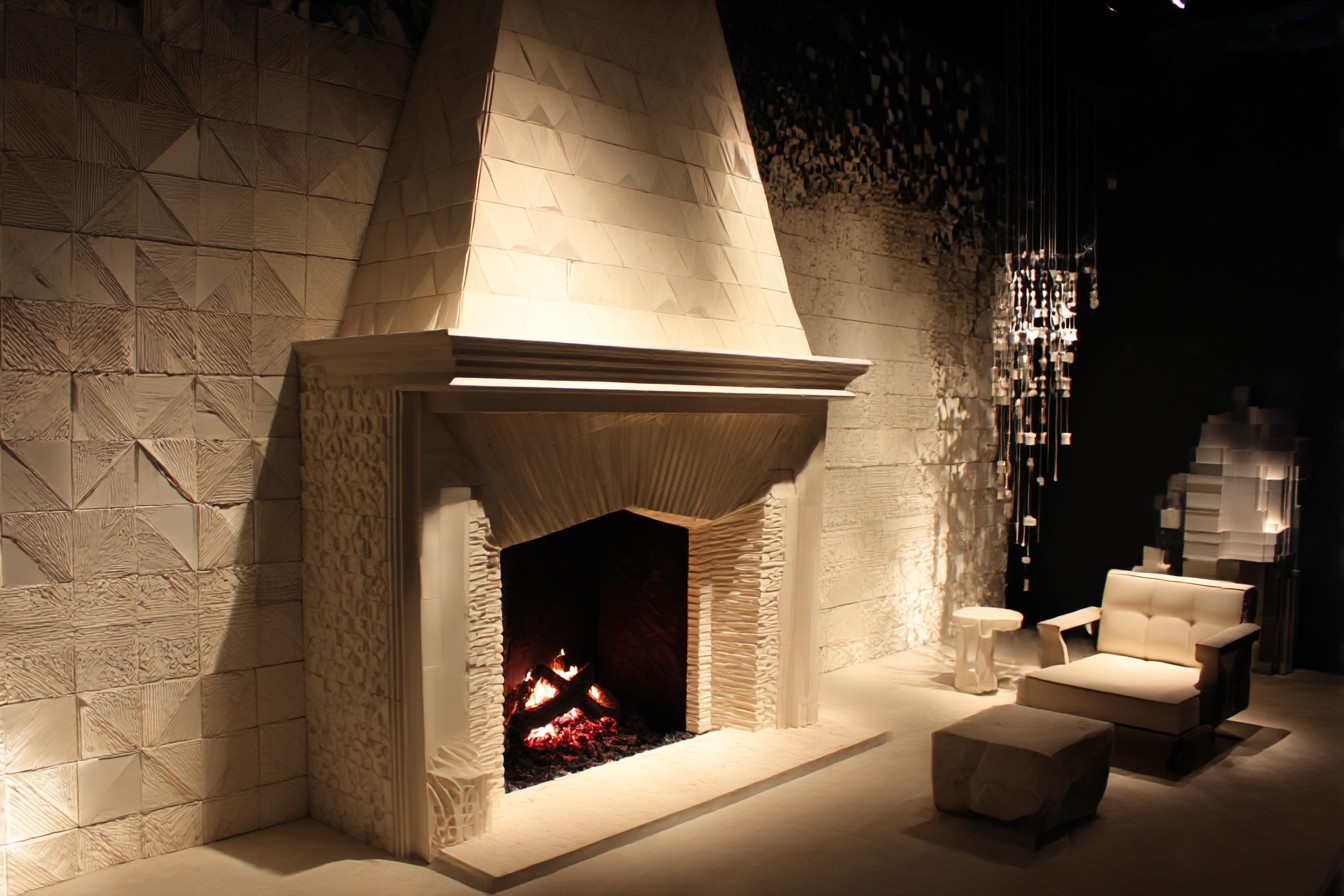
Wall treatments surrounding fireplaces significantly impact their integration with the larger space. For a craftsman bungalow in Portland with a classic brick fireplace, the previous owners had installed bold wallpaper on the chimney wall that immediately drew attention away from the architectural feature. Our approach removed this competing element, instead using a textured paint finish in a slightly deeper value than the adjacent walls. This subtle differentiation created appropriate emphasis without disruption, allowing the original craftsmanship to regain its rightful prominence.
In more contemporary settings, extending surround materials onto surrounding walls can create a more integrated composition. A client in Denver with a wood-burning stove initially planned to create a small stone pad behind it, leaving the rest of the wall painted. By extending natural stone across the entire wall, we transformed what would have been a visually disconnected appliance into an architectural feature with presence and purpose. This approach works particularly well for freestanding fireplace inserts that lack the built-in framing of traditional fireplaces.
Television placement remains perhaps the most contentious issue in contemporary fireplace design. When a Chicago client insisted on mounting their 65-inch TV directly above their living room fireplace—despite the uncomfortably high viewing angle this created—we developed a compromise: a custom mantel with a slight forward projection that allowed the television to be mounted on an articulating arm that could pull down to a more comfortable viewing height when in use. This solution maintained the fireplace’s visual primacy while acknowledging modern living patterns. The lesson? Sometimes successful design involves creative problem-solving rather than rigid adherence to either tradition or trends.
For situations where above-fireplace mounting truly makes the most sense, proportional relationships become crucial. A client in Boston mounted a modestly sized television centered above their substantial traditional fireplace, creating an awkward floating element that satisfied neither traditional nor contemporary aesthetics. By upgrading to a properly scaled screen and creating a simple frame that related to the mantel below, we transformed the arrangement from awkward afterthought to intentional composition. Sometimes embracing the reality of modern technology through thoughtful integration produces better results than pretending it doesn’t exist.
Furniture arrangement dramatically impacts how fireplace focal points function within lived spaces. One of the most common mistakes I encounter involves positioning sofas and chairs exclusively toward fireplaces that see only occasional use, creating rooms that feel formal and static rather than responsive to daily patterns. For a family in Minneapolis, we developed a flexible furniture arrangement that could pivot seasonally—more fireplace-focused during winter months, more conversation-oriented during summer. This simple adjustment through movable furniture pieces transformed how frequently they actually used their living room throughout the year.
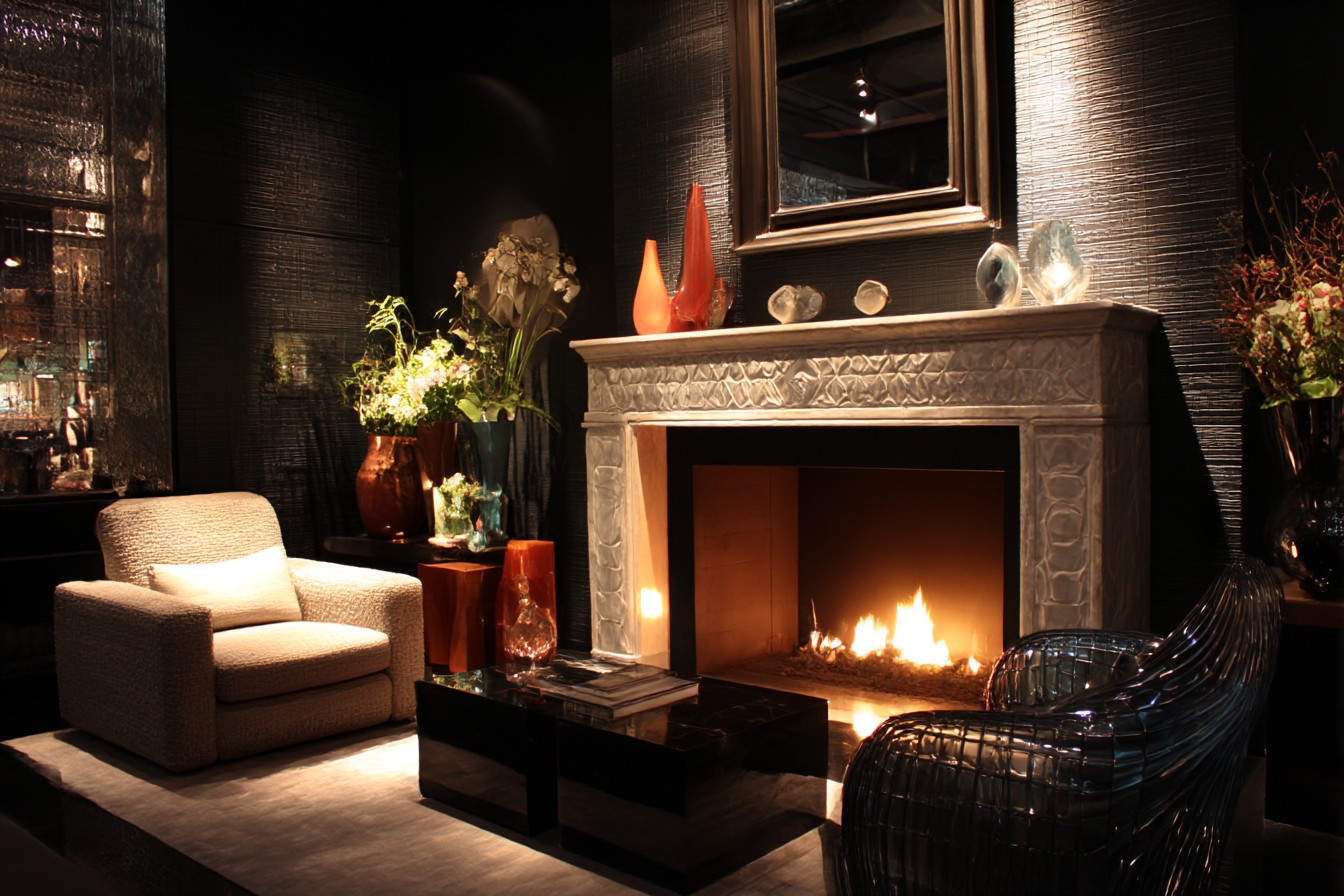
Lighting design provides another opportunity for either enhancing or undermining fireplace integration. A client in Seattle had installed dramatic uplighting on their stone fireplace surround, creating harsh shadows that emphasized texture to an almost cartoonish degree while competing with the natural light from nearby windows. We replaced this with more subtle ambient lighting supplemented by carefully positioned accent lights that highlighted the material’s natural beauty without theatrical exaggeration. The space immediately felt more sophisticated and balanced, allowing the fireplace to command appropriate attention without shouting for it.
For evening ambiance, the relationship between fireplace illumination and room lighting requires thoughtful coordination. In our Minneapolis home, we discovered that our original lighting plan inadvertently created competition between the warm glow of the fire and overhead fixtures. By incorporating dimmable options and warm-temperature bulbs, we developed lighting scenes that complemented rather than fought against the fireplace when in use. This coordination between natural and artificial light sources creates a more cohesive atmosphere that enhances the fireplace experience rather than diminishing it.
Seasonal adaptability represents another frequently overlooked aspect of successful fireplace design. For a client in Chicago with a wood-burning fireplace used primarily during winter months, the surround remained a dark void during warmer seasons when not in use. We designed a decorative summer screen featuring materials that complemented the room’s overall design, transforming what would have been a black hole into a continuing visual asset year-round. This approach acknowledges that fireplaces maintain their focal point status even when not actively providing heat or flame.
Material transitions around fireplaces often create awkward junctions that undermine otherwise successful designs. A client in Denver had beautiful hardwood floors that met their stone hearth extension in a visibly uncomfortable straight line that called attention to itself. By redesigning the transition with a more graceful curved boundary, we transformed an awkward junction into a design feature that enhanced both materials. These transition details might seem minor, but they often disproportionately impact whether a design feels thoughtfully executed or hastily assembled.
Regional design variations significantly impact appropriate fireplace treatments. Working on projects across different areas of the country has highlighted how regional materials and traditions create authentic connections to place. For a renovation in Arizona, using extracted local stone for the fireplace surround established a relationship with the landscape visible through nearby windows. This contextual approach feels fundamentally different from the increasingly common practice of applying identical styles regardless of architectural context or regional character—what I call “Pinterest fireplaces” that could exist anywhere and therefore feel rooted nowhere.
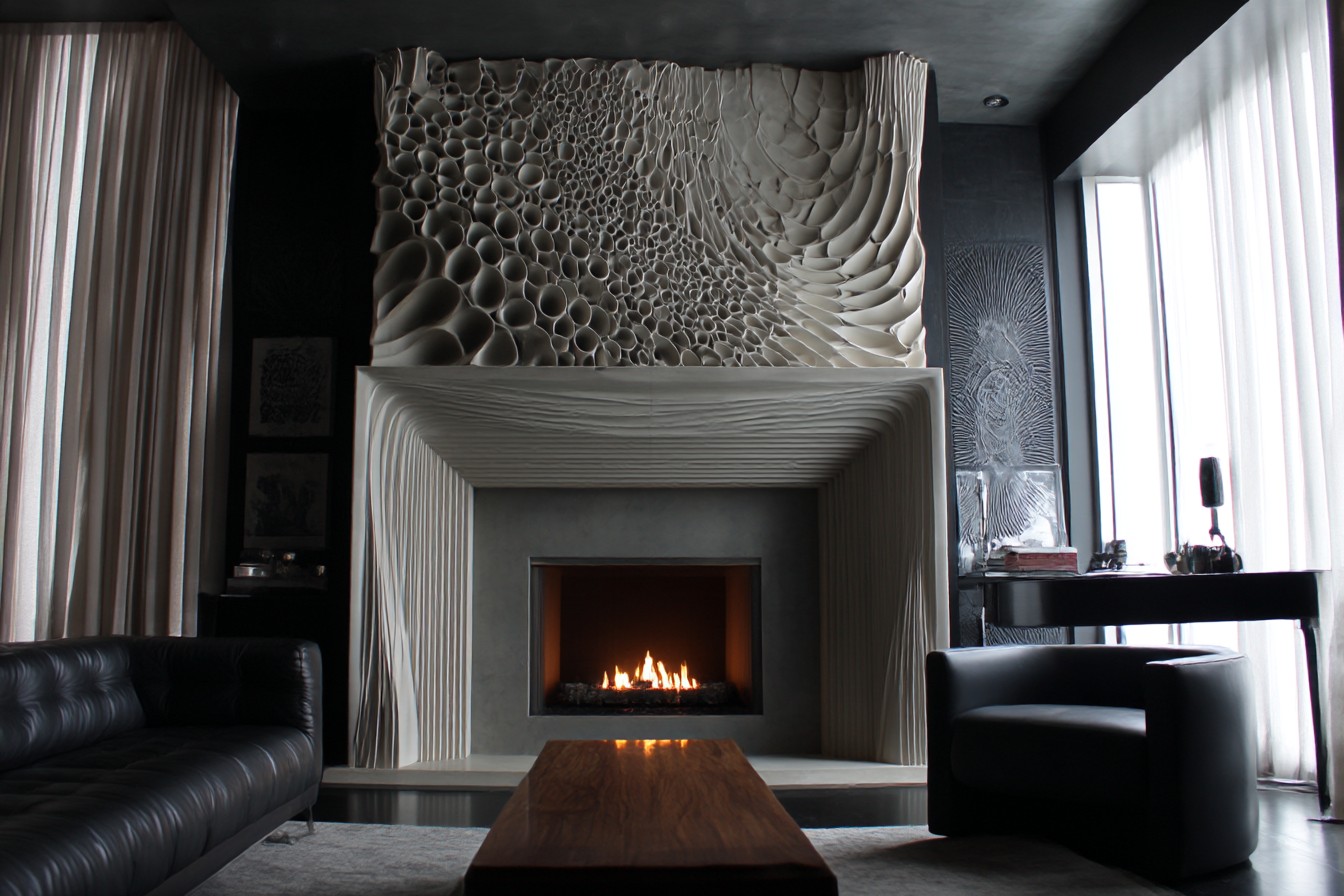
In historic renovations, fireplace restoration requires careful balance between preservation and modernization. For a 1910 foursquare in Minneapolis with a damaged but salvageable original fireplace, we carefully restored tile and woodwork while upgrading the interior firebox with a high-efficiency insert. This approach maintained the architectural integrity and craftsmanship of the original construction while improving functionality for contemporary use. The resulting fireplace honored the home’s history while acknowledging modern performance expectations—a balance that purely decorative conversions rarely achieve.
For non-working fireplaces, thoughtful repurposing can maintain their architectural significance without pretending functionality that doesn’t exist. A client in Boston with a condemned chimney initially planned to install an electric insert that mimicked flames. Instead, we designed a beautiful arrangement of pillar candles on a custom platform within the firebox, creating genuine warmth and movement without attempting unconvincing simulation. This honest approach acknowledged the original purpose while adapting it appropriately, preserving architectural integrity without awkward imitation.
The most successful fireplace integrations I’ve encountered share a common philosophy regardless of style: they respect the fireplace’s natural dominance without allowing it to tyrannize the space around it. They establish meaningful connections with architectural elements, materials, and furnishings that create coherent compositions rather than competing visual statements. They acknowledge regional context and historical precedent without slavish imitation. And perhaps most importantly, they enhance the actual living patterns of the people who inhabit the space rather than demanding that human behavior conform to design.
Our Minneapolis Tudor’s restored fireplace now exemplifies this balanced approach. The limestone surround and simply detailed mantel provide an appropriate focal point without overwhelming the room. Bookcases on either side create a sense of intentional composition while offering practical display space. The furniture arrangement acknowledges the fireplace’s importance while remaining flexible for conversation. And most tellingly, visitors naturally gravitate toward it without explicitly commenting on it—perhaps the highest compliment for a well-integrated architectural element that enhances rather than demands attention.
As my Chicago clients discovered after removing their aquarium-inspired tile, sometimes the most successful fireplace design allows the inherent architectural feature to play its natural role without unnecessary embellishment or competition. Their restored Tudor fireplace now serves as a quiet anchor for their living room, neither disappearing into irrelevance nor demanding constant acknowledgment. They recently told me they’ve stopped noticing it specifically—not because it lacks importance, but because it now belongs so naturally to the space that it simply feels right. And ultimately, that sense of appropriate belonging rather than competitive attention-seeking defines truly successful integration in the homes we actually live in rather than merely photograph.